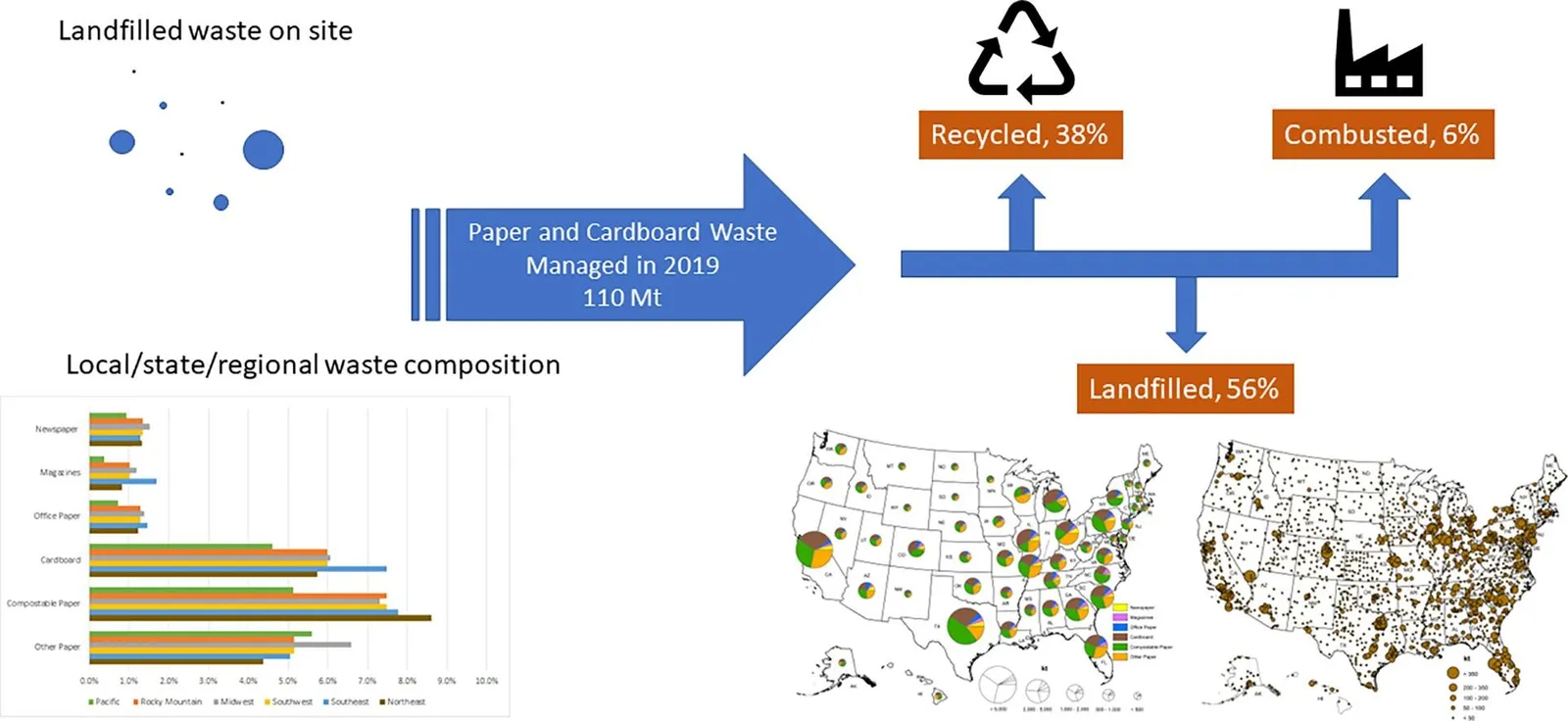The following piece was submitted by members of the Product Stewardship Institute. See the full list below.
Too much paper and cardboard is still going to waste in the United States. Contrary to popular belief, recycling costs money and even the most recycled materials should pay their fair share of recycling programs.
As operators of recycling programs across the country, we also celebrated America Recycles Day and appreciate the efforts that the American Forest & Paper Association and many others have made to increase paper recycling.
However, we feel it is necessary to confront the reality that the current recycling system in the U.S. is not as effective as AF&PA claims and recognize that extended producer responsibility programs around the world have been shown to boost paper recycling rates.
Paper and cardboard continue to be some of the most highly recyclable materials, but waste characterization data from our jurisdictions show they consistently make up the largest volume of readily recyclable materials sent to landfills. The 68% paper recycling rate cited by the paper industry simply does not match up with what we see on the ground. Other industry sources have questioned the method used by AF&PA, indicating that the real recycling rates for paper are likely much lower.
Based on the latest available data, the estimated recycling rates for paper and cardboard is 27% in Colorado, 43% in Illinois and 30% in Massachusetts. Even in Oregon and Washington, which have led the way with curbside recycling programs since the 1980s, state data puts paper recycling rates below 60%.
Over the past decade, progress to increase recycling has been frustratingly slow — and in some areas, even stagnant or declining. According to The Recycling Partnership, an estimated three out of five cardboard boxes discarded by households are not recycled. Improving recycling in residential settings has become increasingly important due to rising levels of e-commerce shopping and remote work.

To succeed, recycling must be as easy as disposal. Yet in many areas, municipalities and private haulers can choose whether to provide recycling services or charge extra for it, leading to low participation rates. In many Chicago-area municipalities, for example, fewer than 30% of businesses have recycling service.
While the paper industry has made new investments in its mills, it also needs to invest more in collection and processing of materials to prepare them for markets. The majority of total recycling costs are from collection activities, revenues from the sale of the recyclable materials collected do not cover the full cost of recycling. This is especially true for materials like paper and cardboard, which have experienced significant volatility and at one point had a negative market value in recent years. Given the volume of paper and cardboard in the recycling stream, this represents a substantial financial burden that is currently borne by residents or municipalities.
Moreover, the current approach to paper recycling in the U.S. is not well-integrated with the domestic pulp and paper industry. Despite a shift toward U.S. mills since 2018, AF&PA’s statistics show that more than 30% of recycled paper still relies on export markets. Mixed paper bales are often contaminated with plastics. When shipped overseas and not properly handled, they can adversely affect disadvantaged populations and the environment.
We believe EPR for packaging and paper products is an equitable path forward to improve recycling of paper and other materials.
Applying EPR policy to the diversity of materials in the packaging and paper products universe ensures that producers of all materials are assigned their fair share of responsibility for end-of-life management of their products. It can also boost recycling rates, expand access to convenient recycling services, increase investments in processing facilities and provide incentives to improve the design of paper and paper packaging. Additionally, such systems can potentially reduce greenhouse gas emissions, limit other environmental degradation and create greater transparency and accountability in our recycling systems.
EPR accomplishes these outcomes by requiring consumer product companies to take responsibility for the materials they are putting into the marketplace. Voluntary programs to increase recycling have failed to demonstrate the capacity to meet the scale needed to improve recycling. This places an unfair burden on companies that try to advance recycling on their own. EPR programs create a level playing field.
It is imperative that producers of all materials, including paper and cardboard, be part of EPR programs and contribute their fair share to the costs of improving the recycling system. Such programs should be designed to ensure producers pay for their materials without subsidizing the costs to manage other materials.
More than 150 leading companies and organizations, led by the Ellen MacArthur Foundation, have publicly committed to support EPR and said it is “the only proven and likely pathway to ensure dedicated, ongoing, and sufficient funding” for the collection and recycling of packaging at scale. AF&PA is absent from this list.
EPR has proven to be successful in modernizing recycling and boosting recycling rates for paper as well as other materials. Across the globe, jurisdictions in Europe and Canada with EPR have achieved recycling rates for paper and cardboard that exceed 80% based on their respective methodologies.
While the current efforts to recycle paper are part of the solution, much more is needed. Let’s work towards a transformational shift of our recycling system by recognizing the potential of EPR to revolutionize paper and cardboard recycling to the benefit of our environment, local communities and industries alike.
Submitted by the following members of the Product Stewardship Institute:
- Mallory Anderson (Partnership on Waste and Energy in Hennepin County, Minnesota)
- Susan Fife-Ferris (director, Solid Waste Planning & Program Management at Seattle Public Utilities in Washington)
- Claire Galkowski (executive director, South Shore Recycling Cooperative in Massachusetts)
- Suzanne Jones (executive director, Eco-Cycle in Colorado)
- Preston Peck (senior sustainability analyst for the City of Tacoma in Washington)
- Christina Seibert (executive director, Solid Waste Agency of Northern Cook County in Illinois)
- Andy Smith (recycling and environmental services manager, King County Solid Waste Division in Washington)
- Kevin Spillane (executive director, Onondaga County Resource Recovery Agency in Syracuse, New York)
- Waneta Trabert (director, Sustainable Materials Management Division for the City of Newton, Massachusetts)
- Walter Willis (executive director, Solid Waste Agency of Lake County in Illinois)
Contributed pieces do not reflect an editorial position by Waste Dive.





















